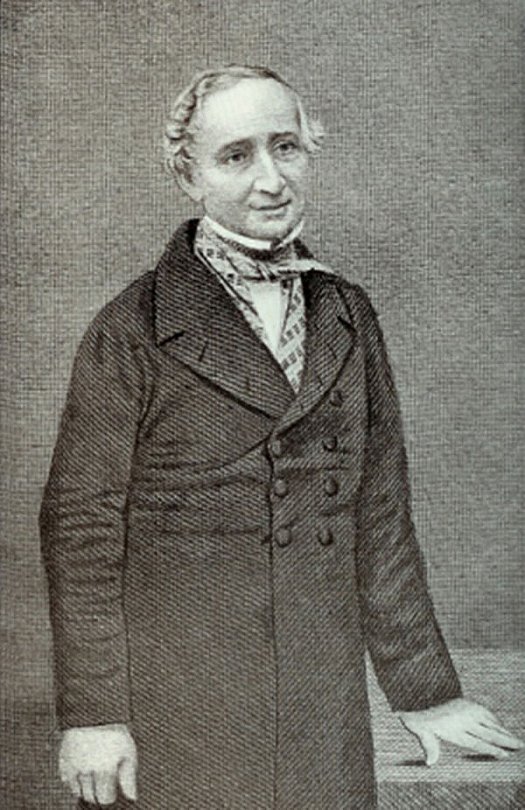The First Brethren Missionary to India
(1795-1853)
(1795-1853)
A great spiritual awakening took place in Europe and the British Isles during the early nineteenth century. This revival is now known as the Modern Missionary Movement. The Spirit of God moved the hearts of His people, and it influenced an ordinary cobbler like William Carey, to come to India in the year 1793. Thus, he became the father of the Modern Missionary Movement.
Many young people committed their lives to the Lord as missionaries in Africa, India, and China. The need to print the Bible in the mother tongues of these people motivated them to study the word of God. It was in this time that a group of people moved by the Holy Spirit decided to follow the New Testament pattern of worship. This divine movement, subsequently known as the ‘Brethren Movement’, started in the year 1825, in Dublin, Ireland.
Anthony Norris Groves was one among the early brethren from the Dublin fellowship. It was he who initiated a great movement in the mission history of the Church called the Faith Missionary Movement which later identified him as the Father of Faith Missions.

Early life and education
Anthony was born on 1st February 1795 as the third child of Anthony and Lydia Groves, in Newton Valence, Hampshire, England and was the only son in a family of six. His father, Anthony Groves was an Anglican businessman and was a member of church in Fulham. In 1808, Anthony as a school boy in Fulham, heard John Owen speak about missionary work in India. As he grew up, the overseas missionary service impacted his heart continuously.
Having trained as a dentist in London, he set up practice in Plymouth at the age of 19. Two years later, he married Mary Bethia Thompson, and moved to Exeter. In 1816, at the age of twenty-one, the evangelical clergymen Joseph Richards and Thomas Hitchins influenced him and professed him as “a disciple of Christ”. In the year 1823, Norris Groves got conviction of full assurance of salvation, as a result of his association with Bessie Paget.
Call to missionary work
In 1826, while continuing his dentistry in Exeter, he enrolled as an external student of theology at Trinity College, Dublin, with a view to get ordination in the Church of England and an appointment with the Church Missionary Society (CMS). His study of the New Testament led him to believe that the practices of the early churches should be considered as a model for all ages and cultures. This caused him to consider withdrawing from Trinity College and from the CMS. His wife advised him also to withdraw from the Anglican Communion. As Groves and his wife grew in the knowledge of Jesus Christ, they grew in their love and commitment to Him and His work. They began by giving 10% of their income for God’s work. They then enhanced it to 25%, and realized that all the possessions belonged to God. So he adopted a simple lifestyle and gave away all his surplus income and savings for the Lord’s work.
He met with other Christian believers in private homes for the study of the apostles’ doctrine, for fellowship, breaking of bread, and prayer, which the early church practiced (Acts 2:42), without the presence of an ordained minister. It was here that he met J N Darby and others, who later became prominent leaders of Plymouth Brethren movement. One of Groves’ friends, Cronin, writes about these meetings: “Oh the blessed seasons with my soul, which John Parnell, William Stokes and others knew, while moving the furniture aside and laying the simple table with its bread and wine on Saturday evenings, seasons of joy, never to be forgotten, for surely we had the Master’s smile and sanction in the beginning of such a movement as this was!” As the years passed, he became increasingly concerned with the drift of the Plymouth Brethren towards sectarianism under the leadership of Darby and aligned himself with George Müller. The split was complete in 1848 to form the Open Brethren and the Exclusive Brethren.
Missionary work at Baghdad
In 1829 Groves and his wife Mary set out for Baghdad, together with their two young sons, Henry and Frank. Several Christian friends accompanied them one among them was John Kitto. A second party set out to join them the following year, among them were Francis William Newman and John Vesey Parnell. In March 1831 Baghdad was a place of intense misery with civil war, plague, floods and famine. In such a situation, Groves suffered the death of his wife Mary and a recently born baby daughter.
In the midst of his trials, Groves wrote: “The Lord has allowed us great peace, and assured confidence in His loving care, and in the truth of His promise, that our bread and our water shall be sure; but certainly nothing but the service of such a Lord as he is would keep me in the scenes which these countries do exhibit, and I feel assured will, till the Lord has finished His judgments on them for the contempt of the name, nature and offices of the Son of God; yet I linger in the hope that He has a remnant even among them, for whose return these convulsions are preparing the way.... The Lord has stopped the water just at the top of our street by a little ledge of high ground, so that as yet we are dry; and all free from the sword of the destroying angel.”
Missionary work in India
In 1833, a revised charter granted to the East India Company opened the way for unrestricted Christian missionary work in India. On invitation from Colonel Arthur Cotton, in 1833, Groves visited missionaries in India and found open doors for the gospel in many parts of the country. In 1834 he accompanied the Scottish missionary educator Alexander Duff from Calcutta to Scotland, nursed him back to health. Duff probably owed his life to Groves’ care, as Arthur Cotton did on an earlier occasion.
During his time in Britain, Groves married Harriet Baynes. She accompanied Groves when he returned to India in 1836 for the second time. John Kitto, Edward Cronin and John V Parnel accompanied him. Rejoined by his sons and others from Baghdad, he established a missionary team in Madras supported largely through his dentistry. Later on, a farm and mission settlement in Chittoor was established. He recruited a number of missionaries to assist existing efforts in several parts of India, and to start new ventures, notably in the Godavari Delta and Tamil Nadu.
Obedience to a heavenly vision
Groves preached and practiced the New Testament principles of living by faith and of seeking guidance and provision from God alone. That is, he wouldn’t be a salaried worker on someone’s payroll, but as a Lord’s servant, all his needs would be met by God in answer to prayer. Conversely, no one else could dictate his movements – they would be carried out in response to God’s guidance alone.
In the year 1825, shortly after his conversion, influenced by the sermon on the Mount, he wrote a small book titled “Christian Devotedness”. It was a ‘bomb shell’ in the ‘mission field’. In it he wrote “The Christian motto should be- Labour hard, consume little, give much and all to Christ.”
Groves advocated the adoption of the New Testament as a manual of missionary methods. One of Groves’ Indian disciples was John Arulappan who also adopted his principles. As a full-time evangelist, Arulappan lived “by faith” and facilitated the creation of a network of indigenous Indian fellowships. Groves’ ideas were later taken up in India and abroad by many. George Muller, one of Groves’ brothers-in-law was influenced by this scriptural principle and fed thousands of orphans daily – he never solicited funds, but only relied on answers to prayer. Hudson Taylor, C T Studd, William MacDonald, George Verwer (founder of Operation Mobilization), Watchman Née, Amy Carmichael, Wilfred Durham, Bakht Singh and Professor Enoch (founder of UESI), are some well-known Christian workers who believed in these principles. Faith Mission has perhaps been the greatest contribution of the Brethren Movement to missions; it works even in the twenty-first century.
Home call
Groves died in 1853 at the age of fifty-eight in Bristol, England, at the home of his sister Mary and her husband George Muller. Although he considered his own missionary career a failure, Groves lived long enough to witness the success of his most promising Indian disciple, John Arulappan, who created an expanding network of indigenous Christian fellowships in the Madurai district of Tamil Nadu. This indigenous work which imbibed Groves’ distinct principles stands out as the truest fulfillment of his vision in his own lifetime and even today.
Bibliography
1. A Historical Sketch of the Brethren Movement by H. A. Ironside, Published by Loizeaux Brothers, 1985.
2. Father of Faith Missions: The life and times of Anthony Norris Groves by Robert Bernard Dann, 2004.
This article first appeared in the Harvest Times magazine in the January 2014 edition.


